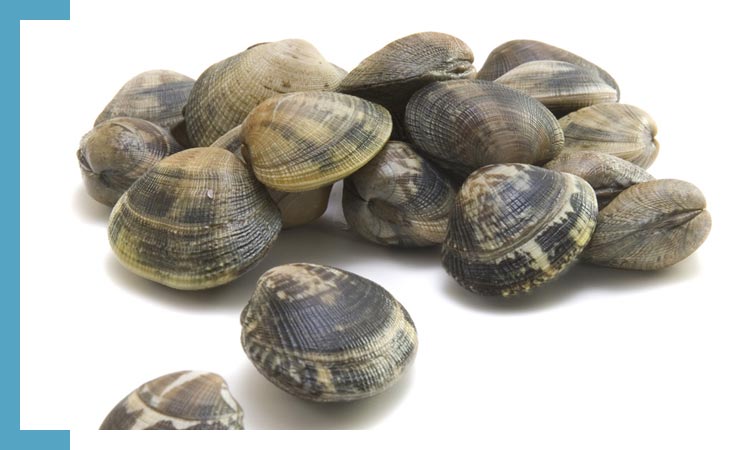
Scientific name: Tapes philippinarum
The Manila clam is part of the bivalve mollusc family and was introduced from Asia into the Mediterranean Sea, particularly in the Adriatic, for commercial purposes. Later it quickly spread, becoming much more common than our local clam (Tapes decussatus).
Characteristics
This variety of clam has a fairly robust oval shell that can reach diameters ranging from six to eight centimeters. The most important distinction between the two species, however, is seen in the morphology of the siphons that appear separate in the clam, while in the Manila clam they are joined at the base and divided at the tip. Furthermore, Tapes philippinarum has a wider range of colours, even quite vivacious, and has a less tender meat.
Habitat
It is a species native to the Pacific, introduced starting from 1983 in the Venice Lagoon and later also in other Italian locations for commercial purposes. Since its introduction it has spread rapidly in the Mediterranean replacing the populations of Tapes decussatus.
The Manila clam’s ideal environment is brackish waters with a sandy or muddy bottom, with good oxygenation. Clams are harvested using classic manual methods, or with the help of scrapers and rakes. Also through the use of more advanced equipment such as boats called ‘vongolari’ equipped with hydraulic dredges or motorised scrapers, however these collection methods damage the seabed, and for this reason it is forbidden and their use is punishable.
Sources:
 English
English


